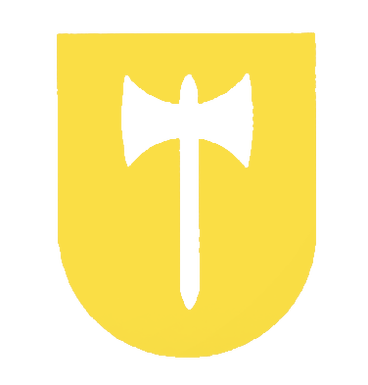March 19th: Pieces of the Past
St. Matthias’ was officially founded as a mission of St. George’s, Place du Canada, in 1873, which means our community is 150 this year! For the next 12 months, we’ll be diving into the archives to shine the spotlight on particularly interesting parts of our history.
Our lectern, affectionately nicknamed “big bird,” one of three major furnishings remaining from the 1875 church.
In an October 1973 letter to Archdeacon Jack Doidge, someone who signs himself only “John” chides the Archdeacon for misrepresenting St. Matthias’ history to the Montreal Gazette. “You are not correct,” he writes, “when you say that it [the old bell] is all that is left from the old church.” John, who was a member of the 1962 committee organising the 50th anniversary celebrations of the new building and who had been one of the last baptisms in the old building in 1910, mentions specifically the lectern, the altar in what is now our chapel, and the baptismal font, and also “many of the plaques” as pieces of St. Matthias’ previous home that Archdeacon Doidge had neglected.
While “many of the plaques” is no longer accurate, if indeed it ever was (all the current plaques antedate the 1912 building, some by several decades), and our archives have not yet revealed the history of the chapel altar, John was right on the money for the lectern and baptismal font.
We are lucky enough to have several card catalogues of parish inventories past that contain, in addition to detailed information about the objects themselves, tantalising details about the histories of their donors. We can know, as a result, that “big bird,” our eagle lectern, was donated in 1903 in memory of Janetta M. Wovenden by her husband Alfred. The inscription says “God is Love.” Alfred and Janetta were active members of the church, she in women’s societies and he in the Sunday School (he also served as a warden and sponsored the Sunday School hockey team!). The inventory card tells us that Alfred was only active into the 1900s. Did her perhaps leave Montreal – or the church – after Janetta’s death?
Certainly the donors of the baptismal font did; they moved away somewhere between 1885 and 1900. Mr. and Mrs. Thomas Montgomery’s firstborn son, William, died in infancy on December 31st, 1879, and they dedicated the baptismal font in his memory. They later had two more sons and three daughters, and Thomas went on to be a warden from 1882 to 1885. The font replaced a household bowl, which Alice Gertrude MacFarlane showed the anonymous inventory compiler, that had been given by the MacFarlanes and used for baptisms for the first few years of St. Matthias’ baptisms. In 1945, we got a bowl again, the silver bowl that now rests inside the font to prevent water leaking from the cracks in the stone; the Scouts, Guides, Cubs, and Brownies donated it in memory of former members who had served and died in World War II.
The original building lives on in other ways that John does not remark upon – the foundation that can still be seen in the dugout beneath the Upper Hall, the art of it in our archives, and, importantly, the land itself. On June 7th, 1875, Elizabeth Raynes (nee Bowman) deeded the land on which St. Matthias’ is built to the Bishop of Montreal for the building of a church. The Bowman family owned a huge strip of land that extended up to the Oratory, and Elizabeth herself owned “considerable acreage” above Cote St. Antoine Road. She and her husband, Robert Raynes, had many children who continued her legacy of generosity, giving significant gifts to the church through 1957, when the last of them passed away. Elizabeth herself lived until 1915, and was buried from the new church. “It is probable,” the inventory compiler confided, “that with the number of Raynes and their continual interest in St. Matthias’, the Raynes’ was the most frequently mentioned name for well over half a century.”



